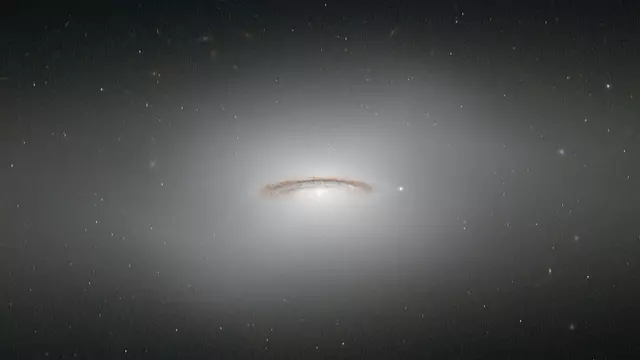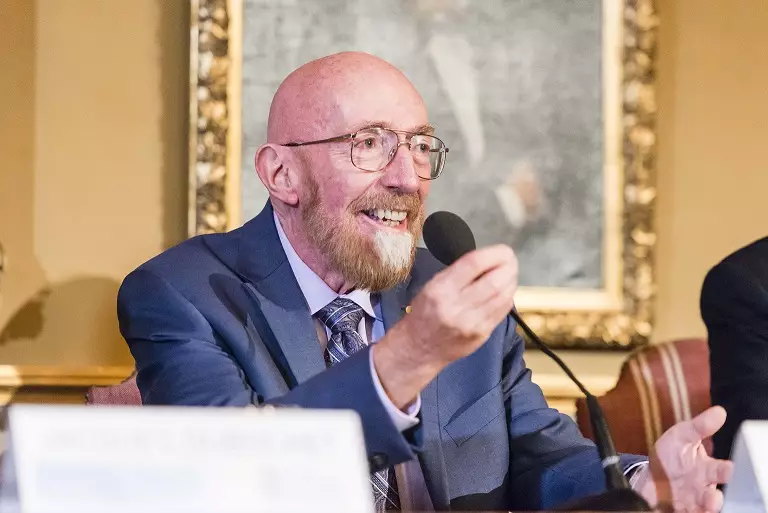
We all know what a black hole is, right? Well, sort of. They're massive holes in space and stuff gets sucked into them - that's essentially the baseline of our understanding, or at least for those of us who've seen a few sci-fi shows on telly and are happy to take their word for it when anything genuinely sciencey happens.
Quick breakdown: they're regions of spacetime which exert such strong gravitational forces that nothing can escape them. Hence people being a bit panicked when the Large Hadron Collider was supposed to make a micro black hole for study purposes back in 2009. Bloody hell.
So black holes are pretty powerful, then. In fact, two enormous black holes that crashed together somewhere in the region of three billion years ago created ripples in the fabric of spacetime that were detected here on Earth on 4 January 2017.
Advert
And if you're wondering what happens when black holes crash into each other, the answer is straightforward enough: they basically create an even bigger one. Well, that's not terrifying at all, is it? Additionally, more power is generated by a collision than all light radiated from stars and galaxies at any one time.
It's the third time that twin detectors at the (deep breath) Laser Interferometer Gravitational-Wave Observatory (aka LIGO, which is much easier) have picked up gravitational waves, and the three scientists behind the first discovery - Rainer Weiss, Barry Barish and Kip Thorne - have since been awarded the Nobel Prize for Physics.
"From this discovery, we can learn more about how stars actually explode," said lead researcher Harald Pfeiffer of the University of Toronto to Motherboard.

"It is further confirmation that there's a large number of colliding black holes in the universe."
Advert
Professor Pfeiffer is also one of around 1,000 scientists who make up the LIGO collaboration, as well as an associate professor at the Canadian Institute for Theoretical Astrophysics.
The three scientists' work was based on a theory proposed by Albert Einstein, who believed that gravity is the result of curves in space and time. In 1916, the renowned physicist said his theory of general relativity meant that gravitational waves could exist.
Einstein proposed that massive events that happen in the cosmos (such as two black holes colliding with each other) could cause ripples in space and time. However, because of the vastness of space, these ripples would barely be noticeable.
To try to counteract this, LIGO was developed in two sites in America - Louisiana and Washington - to try to detect any hint of these ripples. That occurred for the first time in September 2015, and the 'chirp signal' lasted for 0.2 seconds.

After scientists realised what they had discovered, they set out to find where it had come from, eventually locating the huge event between 0.6 to 1.4 billion light years away.
Advert
This ultimately meant that LIGO had provided scientists with a new way to study black holes.
More recently, a collision of black holes produced one 49 times the mass of our galaxy's sun, with leftover mass being turned into pure gravitational energy. (This is one of those 'getting a bit sciencey' bits where we're happy to take their word for it, because it sounds dead clever.)
In a statement, MIT's David Shoemaker, spokesperson for the LIGO Scientific Collaboration, said: "We have further confirmation of the existence of stellar-mass black holes that are larger than 20 solar masses-these are objects we didn't know existed before LIGO detected them."
LIGO's newest work is published in Physical Review Letters.
Featured Image Credit: NASA Goddard Space Flight Centre (Creative Commons)Topics: Science, World News, US News